





Tarragon
Artemisia dracunculus – the perennial herbaceous plant of family of Astrovye reaching up to 120-150 cm in height with thin, naked, branchy, yellowish-brown stalks. Leaves are lanceolate, 2-8 cm in length and 2-10 mm width, green color, glossy with the whole edges. Flowers small, round 2-4 mm in the diameter, yellow or chartreuse color. The fruit – a mericarp blossoms in the second half of summer.
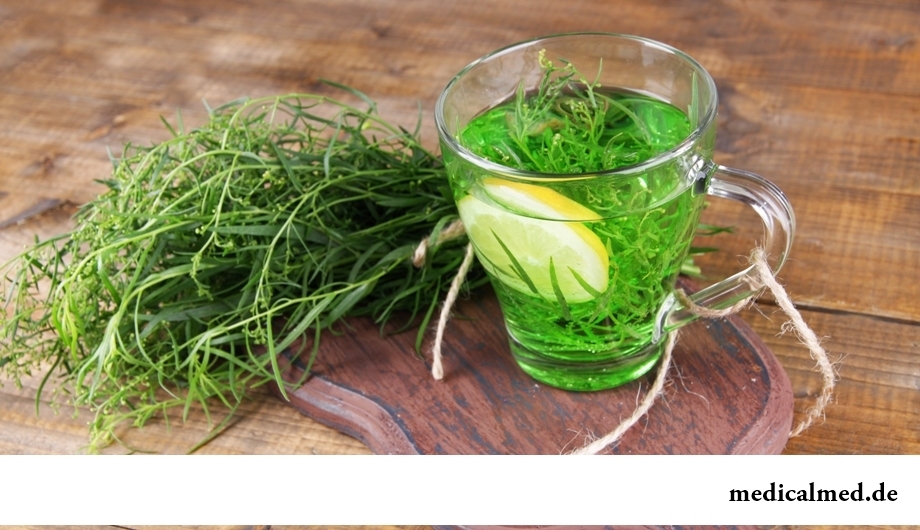
Presumably the plant was delivered to Europe from Mongolia and Siberia at invasion of Mongols in the 13th century. The tarragon got to England in the 15th century, and from there was widespread to America. In Asia and Europe the tarragon is widely cultivated as a medicinal and spicy plant. The most widespread grades of a tarragon are the Tarragon French, Russian and Transcaucasian.
On chemical composition the tarragon (A wormwood tarragon or the Estragon) consists of 0,25-1% of essential oil, more hotly, pitches, coumarins, a gerniarin, isocoumarin, vitamin C, flavonoids, sterols, hydrocarbon, a tannin and protein. At the use the plant has fortifying effect, improves appetite and promotes digestion.
Useful properties of a tarragon
The fresh tarragon is a source of antioxidants, and scientific research shows that polyphenolic connections in this grass promote decrease in level of glucose in blood. It is possible to carry the phytonutrients which are its part which are necessary for maintenance of immunity of an organism to useful properties of a tarragon.
Laboratory researches of extract of a tarragon show, that some connections which are its part inhibit activation of thrombocytes, what prevents their aggregation and adhesion to walls of blood vessels that in turn excludes formation of clots in tiny blood vessels of heart and brain and is prevention of a heart attack and stroke.
The grass is a source of vitamins A, With and a complex of group of vitamins B such as folates, a pyridoxine, Niacinum and Riboflavinum which function as cofactors in metabolism.
It is also possible to refer availability in it of such minerals as calcium, manganese, iron, magnesium, copper, potassium and zinc to useful properties of a tarragon. Manganese is used by an organism as a cofactor for antioxidant enzyme of a superoxide scavenger. Iron is necessary for cellular respiration (a cofactor for cytochrome) and formations of blood cells.
Use of a tarragon
For preparation of medicines on the basis of a tarragon an upper part of a plant is used. Use of a tarragon in medicine is effective at treatment of a dentagra, a premenstrual syndrome, nausea, an infection of urinary tract, problems with digestion, small appetite and sleeplessness, a meteorism, a hiccups, dyspepsia and anorexia.
Essential oil of a tarragon is applied in stomatology as local antiseptic and anesthetic at a dentagra.
By results of a research of Brigham Young University in the USA it was proved that use of a tarragon is effective at an erosion of a neck of uterus and a carcinoma cutaneum.
In nonconventional medicine the tarragon is used at consolidation of walls of vessels and other vascular disorders.
In manufacturing industry the tarragon is used as fragrance by production of soap and cosmetics.
Use of a tarragon in cookery is especially widespread in France where the plant is the main component of sauce Bearnez and is a part of the majority of recipes on preparation of chicken, fish and eggs dishes. Fresh slightly crumpled branches of a tarragon add to vinegar for receiving juicy vinegar on a tarragon, also widely use a plant for preparation of salads, a pickles and marinades.
In such countries as Azerbaijan, Armenia, Georgia and, as a result, Russia, Ukraine and Kazakhstan the tarragon is used for aromatization of the popular Estragon soft drink which possesses the refreshing action and is painted in bright green color.
In Slovenia use of a tarragon in the form of spice is necessary for preparation of traditional sweet pie of Potits, and in Vegriya season with a tarragon chicken soup.
Tea on the basis of a tarragon is efficient means at treatment of sleeplessness.
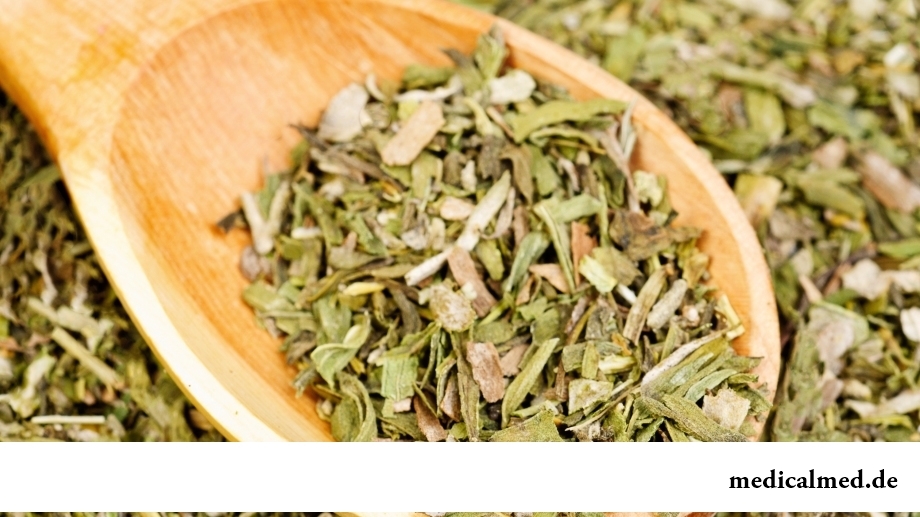
Contraindications
Use of a tarragon in a small amount in food is absolutely safe and does not cause any complications in healthy people. However prolonged use of a tarragon can lead to formation of cancer tumors as it contains organic matter methyl chavicol.
Also a contraindication to a tarragon is the allergy to the plants belonging to family of a thistle family such as chrysanthemums, marigold, daisies and many others.
At cholelithiasis the tarragon is contraindicated to use as the plant has cholagogue effect which stimulates an exit of stones from a gall bladder. In the presence of big stones in a gall bladder the tarragon will promote their removal that will cause strong spasms and pain.
Pregnancy and the period of a lactation are a contraindication to a tarragon as contained in a plant туйон can cause loss of milk and lead to abortion.
At regular visit of a sunbed the chance to develop a carcinoma cutaneum increases by 60%.

Season of activity of viral infections in the heat. Everyone can get sick, but probability of this unpleasant event it is possible and it is necessary miny...
Section: Articles about health
Shops of household appliances offer us the huge choice of various devices for the house. Whether there are among this abundance devices which not only facilitate house work, but also help to keep health of the person? Of course, and we will tell about them today....
Section: Articles about health
Residents of big cities quite often have a disease which is known as the syndrome of chronic fatigue (SCF) today. This illness affects the people belonging to various social and demographic groups and living on all continents. Most of all SHU are subject women aged from 25 up to 45 years. Statistically, the number of cases fluctuates in the different countries from 10 to 37 people on 100 thousand, but specialists believe that these figures are significantly underestimated as people, страдающ...
Section: Articles about health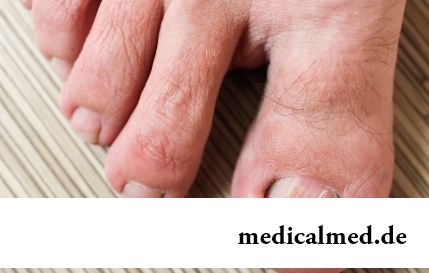
The word "onikhokriptoz" is unfamiliar to most of people, meanwhile quite so physicians call very widespread problem: growing...
Section: Articles about health
According to data of World Health Organization, the cataract is diagnosed almost for 7% of the population of Earth. The statistics of incidence is considered not full as at an initial stage the illness, as a rule, does not cause to the person of special inconveniences, and many having got sick...
Section: Articles about health
No, probably, the person who would not have cold. Cold, cough, a headache – these symptoms are known to everyone. The peak of catarrhal diseases is the share of fall. SARS already came to schools and kindergartens, flu slowly makes the way to the cities, in a word, winter close!...
Section: Articles about health
The words "disease" and "patient" not without reason come from one root – "pain". As a rule, symptoms of illnesses thoroughly spoil the patient...
Section: Articles about health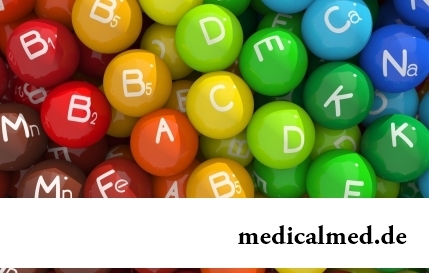
Vitamin complexes belong to the most popular drugs, probably, in our country there is no person who was not hearing about advantage of vitamins and never their accepting. The more vitamins, the better, we consider and as it appeared, cruelly we are mistaken. So l...
Section: Articles about health
People know that thermal sources have salutary force long ago. Treatment by natural waters is one of the most ancient methods of disposal of the most different diseases. Bathtubs, souls, wrappings and inhalations, in combination with water reception inside help to improve a condition of the patients suffering from disturbances of work of a musculoskeletal system, bodies of digestive tract, cardiovascular, nervous, respiratory and secretory system, skin and endocrine п...
Section: Articles about health
Epilepsy is one of widespread neurologic diseases. To parents, whose children suffer from this illness, it is necessary...
Section: Articles about health
The advantage of swimming for the person is so high that this sport is not only the most popular, but also is widely applied in medicine and rehabilitation processes. If you look for for yourself the occupation allowing pleasantly and to spend time, then swimming with advantage...
Section: Slideshow
History of use of an anesthesia during operations contains more than 160 years. Annually in the world hundreds of thousands of surgical interventions during which to patients the substances immersing them in a dream and saving from pain are entered are carried out. Using an anesthesia many myths and delusions are still connected. It is worth getting acquainted with the most widespread of them....
Section: Articles about health
Each person has easy indispositions which he transfers "standing", trying not to ask for medical care. Argu...
Section: Articles about health
When overcomes feeling of hunger, and an opportunity to have dinner fully is absent, having a snack − the meals, small on volume, stabilizing sugar level in blood comes to the rescue. The relation of nutritionists to having a snack is more often negative, but only because in кач...
Section: Articles about health
Life of the modern child is extremely active and difficult. Information strain which is experienced by the school student and did not dream pupils of last times. Careful parents, wishing well to the children, will organize a set of additional classes in circles, sports sections and music schools. In such situation the child needs continuous care and good nutrition to keep health and high performance....
Section: Articles about health
The unpleasant feelings connected with spring breakdown are familiar almost to each of us. Often happens that in March-April on the person...
Section: Articles about health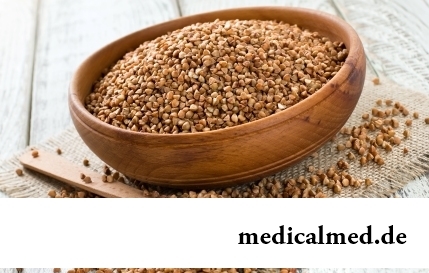
History of cultivation of a buckwheat contains more than five thousand years. Grain which is received from this plant is used for preparation of porridges, soups, baked puddings and puddings, do flour which is one of the main ingredients of the noodles popular in of it...
Section: Articles about health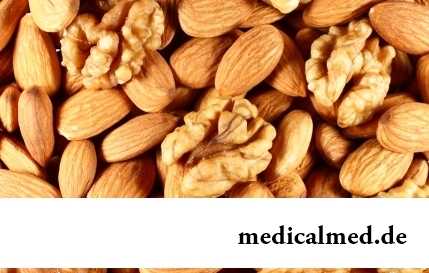
For the last decades the diabetes mellitus of the second type became really world problem. The number of cases annually increases, and average age of patients for whom the illness is diagnosed, steadily decreases. Specialists consider that one of the main reasons for this trouble is disturbance of a diet. In other words, the huge number of people regularly overeats or excessively is fond of the products causing glucose exchange process failures....
Section: Articles about health
Cold is such painful that each sigh becomes a victory, heat "knocks" down, and the ache in joints forces to think only about...
Section: Articles about health
Scientists have no unambiguous opinion on a proximate cause of emergence of a carcinoma cutaneum today. Only the factors promoting development of this illness are precisely established. Treat them: long impact on skin of ultraviolet rays, radioactive...
Section: Articles about health
For the person who daily since morning gathers for work it is very important to wake up vigorous and ready by day of work. Actually, each of us experiences difficulties with this, at first sight, simple business from time to time. After night rest exert impact on a condition of an organism the weather which collected for several days fatigue, household and office problems, quality of a dream and many other factors....
Section: Articles about health
The sudden heat on all body which is followed by perspiration and a cardiopalmus – the phenomenon familiar to many people. Most often t...
Section: Articles about health
Reactive pancreatitis - the disease which is characterized by inflammatory process in a pancreas which arises most often because of excess activity of digestive enzymes. It − the emergency state which treatment has to take place in хирургич...
Section: Articles about health
Bulimia and anorexia, are heavy deviations of a feeding behavior, become a cause of death of patients much more often than all other nervous breakdowns combined. In 60% of cases two illnesses accompany each other: patients feel horror before danger of set of excess weight and try to refuse as often as possible food, but periodically suffer from attacks of sudden hunger and an uncontrollable overeating. Each patient with anorexia and bulimia needs the help qualified пс...
Section: Articles about health
The number of long-livers is very small. One person from 5 thousand lives up to age of 90 years, and the centenary boundary steps only about...
Section: Articles about health
The person, as well as all other beings living on our planet feels weather changing. It is the normal meteosensitivity which is not causing to healthy people of special troubles. Meteodependence, on the contrary, is morbid condition, характеризующимс...
Section: Articles about health
Eyes – one of the most vulnerable areas on a face therefore age changes concern them first of all. Whether it is possible to keep look youth for many years and what procedures are offered for achievement of this purpose by cosmetologists? And maybe, the only option of rejuvenation is surgery – a blepharoplasty? Let's try to understand this question....
Section: Articles about health
